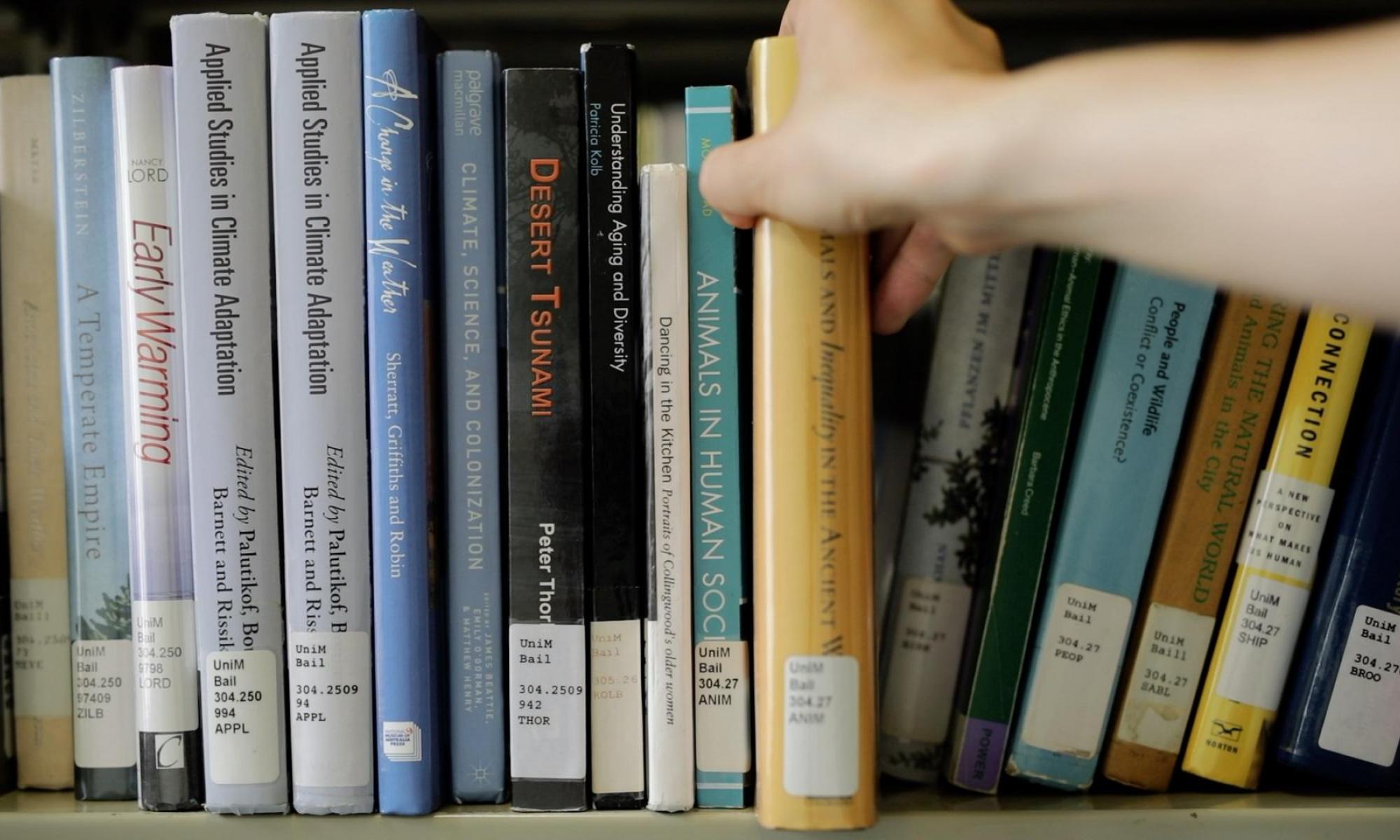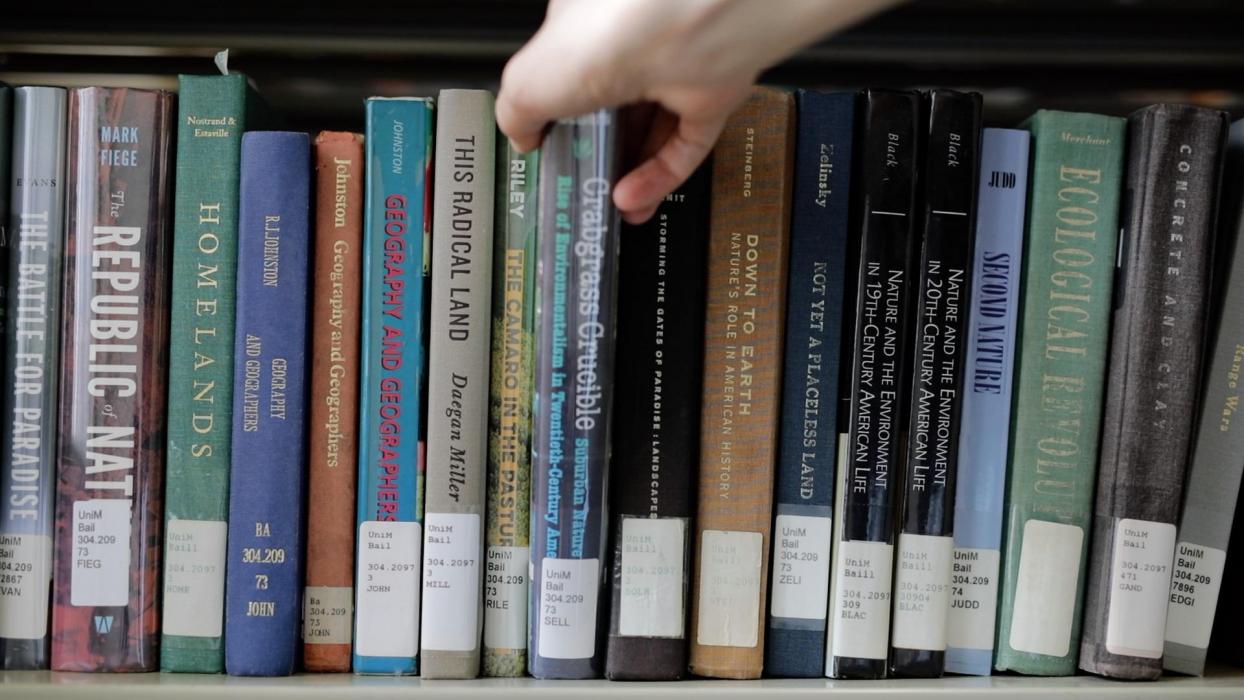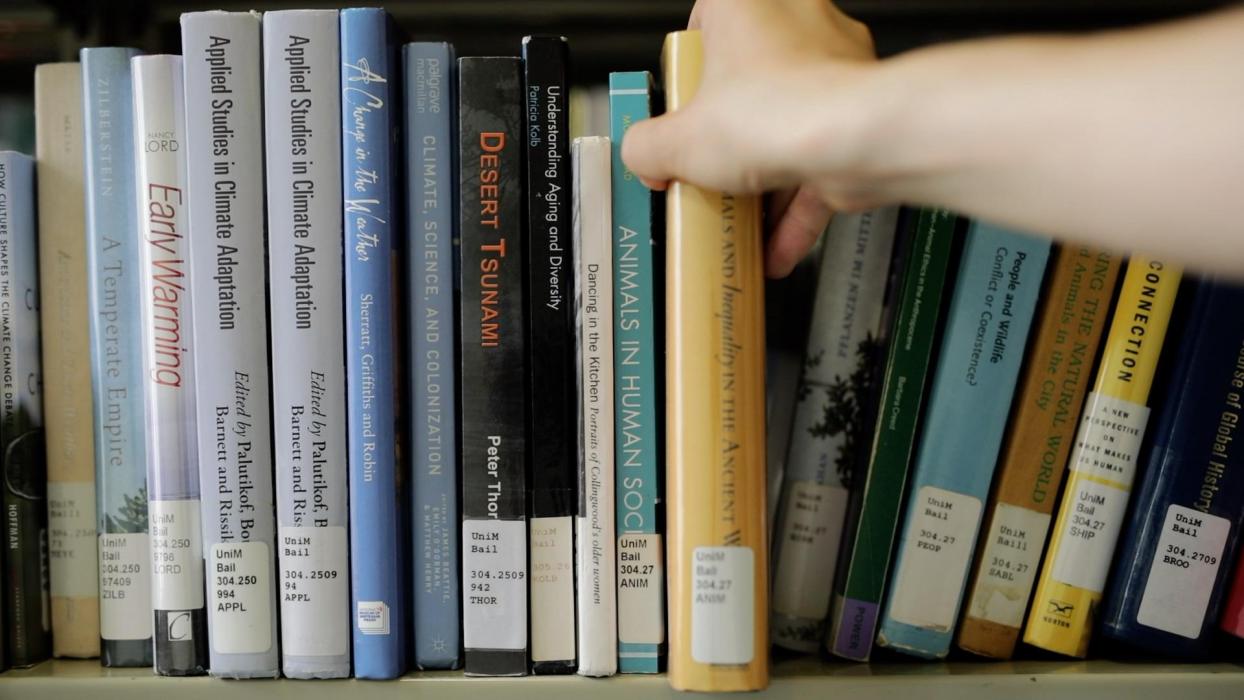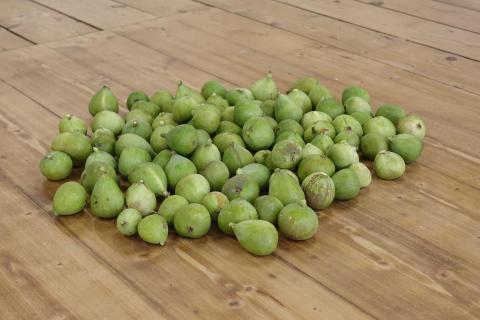The Dematerialisation of the Classroom (a lesson in showing up)
‘Art does not reproduce the visible, but rather makes the visible.’
Paul Klee
I sometimes work as a ‘casual academic’ at an art school where a management strategy is afoot: to dematerialise the classroom. I borrow the word ‘dematerialise’ from Lucy Lippard’s and John Chandler’s often-cited 1968 essay ‘The Dematerialization of the Art Object.’ [1] In this essay, the authors argue that the loss of interest in the process of making objects, which they see as indicative of the intellectual focus of conceptual art, has turned the studio into a study: ‘Such a trend appears to be provoking a profound dematerialization of art, especially of art as object, and if it continues to prevail, it may result in the objects becoming wholly obsolete.’ [2] I don’t necessarily agree with their diagnosis; objects continued to materialise, just differently, and maybe even with more ferocity. In fact, whenever dematerialisation is invoked it is good practice to look around for what has been stashed away or overlooked (for example, undersea cables making so-called wireless communication possible, or the enormous labour and energy that goes into maintaining the hardware that supports billowing clouds of data). That huge amounts of unseen labour allows for something to be seen is not surprising, it follows an economic system that works hard to separate—with distance, complexity and oppression—the making from the made, the exploited from the comforted, the unnamed from the named. I’m using the word dematerialise because it problematizes this feeling of teaching in an institution that is doing everything it can to make the classroom, and anyone in it, ‘wholly obsolete’. This audacious plan seeks to replace the classroom with online platforms, much like conceptual art was seen to be replacing the studio with the study. Like conceptual art, this managerial project has achieved many of its goals but has also failed. The classroom, like the art object, remains a problem.
In response to the ‘continual reference to the disappearance of the art object’, the conceptual artist Keith Arnatt made Self-Burial (Television Interference Project), a series of nine photographs that appeared on German television in October 1969. For approximately two seconds, a photograph from the series interrupted a television programme to show Arnatt disappearing further and further into the ground, until all that remained was a patch of disturbed soil, framed by shrubs, trees and mountains. The irony of the work is that in order to respond to the disappearance of the art object, and to follow that logic through to the eventual disappearance of the artist, an artwork had to appear, to interrupt. It seems suitable to play with this paradox within the context of an institution where the legacies of conceptual art are taught and celebrated. For it is not that the university would do away with students; it would simply rather they exist as paying datum, as concepts that can log in and log out, submit assignments online and appear occasionally on promotional material. An anxious, overcompensating, and obsessive emphasis on ‘personalising the student experience’ confirms this (equivalent, perhaps, to those automated customer surveys at the end of a vexing call to the electricity, gas, internet, or insurance company: Were you satisfied with our services? How can we improve? Did you find the information provided useful?) The economisation practiced by management is an open-ended process of testing and tinkering. It is a creative, shifty and collaborative work that often mirrors, in some strange way, artistic strategies discussed in the classroom. In this way, it interferes in the process of learning in order to make work that often has nothing to do with study, or the way students and teachers learn and interact. It believes, just as the historical avant-garde did, in introducing not just new concepts and objects but altering our perception of concepts and objects. It is therefore a work that might best be understood within the histories and theories of conceptual art.
Recall Sol LeWitt’s impersonal geometric drawings and forms (or as he preferred, ‘structures’), executed by assistants following the artist’s instructions, and therefore challenging the notion of artistic authorship. As LeWitt wrote in ‘Paragraphs on Conceptual Art’ published in Artforum in 1967, ‘When an artist uses a conceptual form of art, it means that all of the planning and decisions are made beforehand and the execution is a perfunctory affair. The idea becomes a machine that makes the art.’ [3] This is where you might think that management strategy and artistic experimentation diverge. In fact, the opposite is true. Management creates concepts for pedagogy but considers their implementation a perfunctory affair; the fact that the instructions have been issued and the parameters established is the locus of meaning in their work. Endless meetings on pedagogical ‘structures’ take place without teachers or students present; an idea is formed and that idea, once announced, becomes a machine that makes the work. The success of an idea is measured not by paying close attention to its effects on the way students are learning (a mysterious process anyway), but in meeting replanned goals and targets. Take, for example, one managerial idea that has rippled through the institution where I work—called Digital Uplift. The success of this idea is not measured by how effectively it improves student comprehension, analysis, research skills, critical thinking, problem solving or their ability to express themselves in relation to course content (having assisted in one of these ‘uplifts’, the title is accurate: it largely involves cosmetically converting course content into PowerPoints and creating discussion questions that can be viewed and answered online, therefore eradicating the need for teachers). Value is instead placed on the number of courses that have been converted, either fully or partially, into their digital avatars (‘Educational Delivery Services’ keep a tally on the university’s website; they hope to reach their target by 2021). This continuing labour is about sneaking economisation methods into digitising processes, which is why, more and more, students must complete prepared tasks and quizzes that do not require discussion, and are marked without ever meeting a human eye. If art is successful, according to LeWitt, it ‘changes our understanding of the conventions by altering our perceptions.’ [4] If managerial pedagogy is successful, it changes our understanding of education, altering our perceptions of what learning is (and can be) by invalidating what is considered vital (such as the emotional, intuitive and perceptive skills gained in a classroom, where students see and listen to others think, talk and react, and where learning is not a closed circuit but a lived and felt exchange). LeWitt was careful to note ‘Conceptual art is not necessarily logical.’ [5] And this is where management might differ from this legacy, since their thinking often mistakes obsessive and endless changes for logic. They do not see, as I think LeWitt did, that every logical statement or instruction is shadowed by its own absurdity, just as rationality holds within it the makings of its own nonsense.
None of this will be surprising to anyone who has spent time at a university like the one I currently teach at on Mondays and Thursdays. Managerial concept work is about energetically and imaginatively ‘exploring’ what students and teachers are willing to do without but still pay tuition, or still turn up for work. It is about dividing and partitioning colleagues, staff and students with promotions or swamping them with administrative duties, such as introducing new marking systems. But there’s also something bizarre about this work, because although the ambition of management is to reduce expenditure and do away with the materials that constitute a university (no doubt tricky and painstaking), what students do once they pay tuition or what teachers teach once they turn up for work is often of little concern. The work of management is about seeing what can be defined as redundant, antiquated or irrelevant within an endless array of ‘structures’, but then paying little attention to the effects of those structures. As my friend and colleague said to me: The university now marches to the beat of Ezra Pound’s famous maxim (though, tellingly, unlikely to have originated with him): ‘Make it new!’
In this way the efforts of management remind me, in a wrong-headed kind of way, of artistic experiments that sought to strip back, simplify and expose the very interpretative structures that surrounded the art object. When Michael Asher, for instance, emptied a gallery in Milan and sandblasted its walls back to its underlying brick (Untiled, 1973), he wanted to question the architectural structures of art. Without floating white walls and not a single object to look at, does the gallery still function as a reified space for contemplation? When I’m told by students that the book I recommended has since vanished from the library catalogue, presumably pulped along with many other books, I have to wonder if management are asking: what is a library without books? When I’m told that students have been told they do not need to attend their studio classes I have to wonder if management are asking: what is a studio without students? Every component of the university is subjected to these endless economic experiments and digitisation techniques. The time students and staff spend online is measured, processes are tweaked, pay is cut, contracts are reworded, troublemakers are weeded out. It would be some form of delusion not to call this what it is: the creation of a market. But what is proving difficult for management in their endless attempts to create, frame and maintain this market is the here and now of the classroom, which I now turn my attention to.
How managerial concepts shape—and fail to shape—the classroom is not a question with an exact answer, which is partly why the classroom still contains the critical optimism required for collective invention. Just as artworks kept appearing at the point in which they were meant to be disappearing, students keep appearing in classrooms, even as semesters shrink, fees increase, resources vanish, degrees are ‘discontinued’ and everyone is pushed more and more into a nervous system of online checks and submissions, where submitted papers are screened for plagiarism by detection services such as Turnitin. [6] Despite this, students keep their rendezvous. When I walk through the door, quite miraculously, the students are there. They are often tired from multiple jobs, or from having to travel for hours to make the class. Some are drinking coffee or eating their breakfast, some have done the readings and others haven’t. They might be slouching over the table or busily preparing for a presentation. But each week they perform a small act of defiance simply by showing up. If this student labour was to be compared to the legacies of modernism it is not that of dematerialisation but of persistence and presence. I think of On Kawara’s methodical and time-consuming date paintings, the TODAY Series, which he began in 1966 and continued until his death in 2014; or Lygia Clark’s experiments with everyday ‘relational objects’—each class, like each work, a proposition or proposal for unheroic moments of collective confabulation; or Grupo de Artistas de Vangardia, who staged a series of installations during strict economic rationalization instituted by the Argentinian government in the 1960s, allowing audiences to compare their independent research with government-sponsored misinformation. All of these works come up in a course I currently teach, and all of them have reverberated in class discussion, with students thinking aloud, talking through confusion or just sitting there in silence, looking. This reverberation, which doesn’t always happen, is only possible because they show up. [7]
When I was a student at the university where I now teach it felt possible to think with others in ways that were, I now realise, unusual. It felt possible to discover what thinking might be, to feel connected to something unknown and larger than rubrics, deadlines, marking and plagiarism checks—all petty training for a life of professionalism. Back then the campus was small, a converted old primary school, with a big fig tree in the courtyard and a tuckshop run by a woman who, amazingly, knew everybody’s name. You will have to forgive me for this nostalgia, but something about walking through the now renovated campus—a concrete box with fake grass and colourful beanbags thrown here and there like the afterthought of a kind-hearted prison warden—is like a memory scrubbed clean of feeling. (The woman who remembered the names of each student was fired when the campus was redesigned.) I can’t help but think that this newish campus has become a gallery for management, and within their austere exhibitions are the students, who show up and occupy a classroom that persists, quite apart from whatever ideas management are working on. It took me longer than it should have to realise that the university doesn’t care what happens in the classroom. So long as the course runs, tuition is paid, and they can continue to chip away at the problem of its materiality, it is a space that is irrelevant to the metrics of management (I’m not saying this is their intention, it is an interpretation of their work). Who knows how long this can last, but by showing up for class, the students teach a lesson in visibility, they teach an art.
Exposure to this sort of art leads to a passing thought: there is nothing stopping us from leaving management to their concept work and showing up elsewhere. As we know, classrooms, like artworks, can be made with the simplest of materials: a time and a place.
[1] Lucy Lippard and John Chandler, Six Years: The Dematerialization of the Art Object from 1966 to 1972, New York: Praeger, 1973 (Originally published in Art International, February 1968)
[2] Lippard and Chandler, 42–43
[3] Sol LeWitt, ‘Paragraphs on Conceptual Art’, Artforum, Vol. 5, No. 10, Summer 1967, pp. 79–83.
[4] Ibid.
[5] Ibid.
[6] Turnitin is an online plagiarism detection service widely used by universities throughout Australia, the UK and elsewhere. By purchasing a license to use the service, universities are promised the ‘most effective plagiarism solution’. As the for-profit company claims, it gives educators and administrators the power to ‘manage potential academic misconduct by highlighting similarities to the world’s largest collection of internet, academic, and student paper content.’ The technology ‘reads’ a student’s writing and outputs a percentage of ‘detected plagiarism’ that it checks against its vast and growing database. In 2019, the American communications company Advance Publications acquired Turnitin for $1.74 billion. The company is yet to acknowledge the large quantities of student work that has taught and fed its software since 1997. Nor have universities considered, as far as I know, what it means to require students to write and submit work under the gaze of this technology, which fosters a presumption of guilt, nervousness, and atmospheres of suspicion and surveillance.
[7] Thank you to my friend Andrew Brooks, who read an earlier version of this essay and reminded me of what Stefano Harney and Fred Moten describe as the chance in every classroom ‘not to issue the call to order, and then see what happens.’ See Harney and Moten, The Undercommons: Fugitive Planning & Black Study, New York, Port Watson, Wivenhoe: Minor Compositions, 2013, pp. 127.




